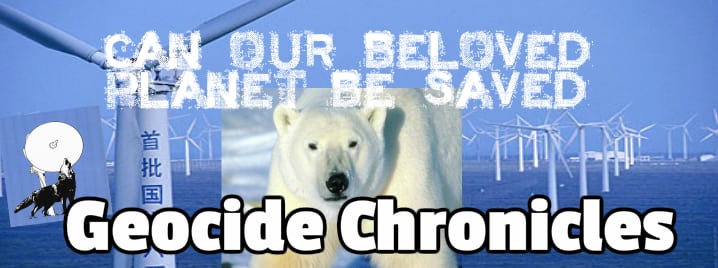Japan’s kow-towing to US is leading to ecological destruction on a majestic reef
by Gavan McCormack
In the first weekend of October 2020, at Oura Bay on the northern fringes of the Japanese island of Okinawa, a spectacular mass coral spawning event occurred. Little attention was paid to it other than by environmentalists and divers.
Two months later, when the Australian Great Barrier Reef underwent the same mass spawning, the event became a cause for national celebration, given extensive coverage on Australian and (to a lesser extent) global television and print media.
 FACT: More than 70% of US bases in Japan are crammed into the small island prefecture of Okinawa, which comprises only 0.6% of Japan’s landmass. Formerly an independent kingdom, Okinawa has now become a de facto military colony of Japan and the United States, with the former acting mainly as police enforcer, and the latter as military occupier.—Editor
FACT: More than 70% of US bases in Japan are crammed into the small island prefecture of Okinawa, which comprises only 0.6% of Japan’s landmass. Formerly an independent kingdom, Okinawa has now become a de facto military colony of Japan and the United States, with the former acting mainly as police enforcer, and the latter as military occupier.—Editor
Both were seen as celebrations of life, yet there was a shadow over them. Vijay Prashad, who has written on the plight of coral worldwide, noted that the UN Environment Program projects comprehensive bleaching and death of coral worldwide by the 2040s “if the current levels of inaction persist”.
Could such magnificent life forms, undisturbed in some cases for thousands of years, really be in terminal crisis? And, could the muted response to the Japanese event be attributable in part to government anxiety lest its contribution to the demise of Oura Bay coral be exposed?
Expert reports confirm that live reef coverage is shrinking steadily around the world, as are the forests of seagrass and kelp. The damage wrought by ocean warming (together with chemical and plastic pollution) is set to become irreversible unless tackled by a huge collective human effort.
Although Okinawa’s Oura Bay is relatively tiny (just under 11 square kilometres in area), it rivals the enormous Australian reef in biodiversity, hosting a veritable cornucopia including around 426 coral species (among them the rare blue coral, heliopora coerulia) compared to the Barrier Reef’s 436.
 Okinawa’s governor refers to the Bay as host to 5,800 biota species, making it “at least twice as rich” as the sea around Galapagos. In its environs are hundreds of species of seagrasses, crustaceans, molluscs, echinoderms, sea snakes. Of these, 262 are classified as endangered, including the dugong, which has been accustomed to graze, cow-like, on sea-floor grasses.
Okinawa’s governor refers to the Bay as host to 5,800 biota species, making it “at least twice as rich” as the sea around Galapagos. In its environs are hundreds of species of seagrasses, crustaceans, molluscs, echinoderms, sea snakes. Of these, 262 are classified as endangered, including the dugong, which has been accustomed to graze, cow-like, on sea-floor grasses.
Adjacent to Oura Bay, in the forest that sweeps down almost to the sea, are multiple species, many of them rare and endangered, including the Okinawa rail (yambarukuina, only “discovered in 1981), Prior’s woodpecker, Temminck Robin, Ryukyu wood pigeon, fresh-water goby, warty salamander, Holst’s frog and Namie’s frog.
In such an ecological hotspot, teeming with life at the juncture of forest and sea, Japan’s government, in consultation with the US government, insists that a huge new military facility must be constructed for the US Marine Corps. So strategically attractive is this site, overlooking the East China Sea, that the Pentagon planned, and would have carried out, such a scheme in the late 1960s during the Vietnam War except that it would have had to pay for it itself.
Thirty years later, Okinawa’s Oura Bay was conceived as a site for a “heliport” that would allow the return to Japan of Futenma Marine Air Station (situated in the midst of Ginowan City, about an hour’s drive away). The “heliport” grew to become a comprehensive, multi-functional air, sea, land military base, to be built on a reclaimed sector of the Bay. Courtesy of Japanese taxpayers, the Pentagon now is to get this free.
From 2012, no world leader did more to ingratiate himself with Donald Trump than Japan’s Abe Shinzo (Prime Minister 2012-2020), whose policies, since his resignation, have been maintained by Suga Yoshihide. For both Abe and Suga, core national policy is to please the US, whoever is in power. What observers refer to as the “closeness” of ties between the two governments is essentially this servility. Proponents of the “Quad” enthuse over such US-Japan relationship and see Trump-Abe, Trump-Suga or, henceforth, Suga-Biden, “coordination” of security policy as a model for Australia.
While the Japanese Government has pushed this project relentlessly, the people of Okinawa have continually made clear their opposition, at local and national elections, by resolutions of the prefectural parliament, by multiple opinion polls, by statements from the Governor, by a prefectural plebiscite (in 2019), but to no avail. The present prefectural governor, Tamaki Denny, like his predecessor, took office after pledging to stop construction.
Construction, which began in 2017 and has occasionally temporarily halted, as during the height of the pandemic, never actually stops. The completion date at Oura Bay is expected at the earliest 2030, quite possibly much later. The strategic assumption underpinning the process is that hostility between Japan and China will continue indefinitely and that Japan will remain a US protectorate, with Okinawa a joint military colonial possession of both countries. In that frame, on one side stand the Okinawan people, the democratic resistance, and on the other, the defence regimes of Washington and Tokyo, joined under the “Quad” concept by Australia (and India).
The current works require solving multiple complex problems, not just political but also engineering. The government is proceeding on the basis of the consent extracted from Okinawan governor Nakaima Hirokazu in December 2013, contrary to his earlier electoral pledge and so plainly counter to the wishes of the Okinawan people that the Prefectural Assembly denounced him for perfidy and the electorate dismissed him at the earliest opportunity (2014).
By 2018 it was clear that the floor of the Bay was composed of a tofu-like substance that will require – if indeed it can ever be successfully managed – reinforcement by insertion of 71,000 support pillars, some of them 90 metres long. It also became clear that the same bay floor was crossed by geological fault lines.
For the significantly altered project, fresh prefectural consent became necessary. For that the national government submitted a formal request in April 2020. When Governor Tamaki invited public comment, a remarkable 18,904 people responded with a substantial, possibly overwhelming, majority expected to demand the prefecture say No. The Governor’s formal response is due any day now.
Today, the national government is doing everything possible to lock in reclamation as fait accompli and the prefecture strives to block or delay works.
On the American side the repeated project delays, and the unflagging Okinawan resistance, feeds doubt about the feasibility of the project. The Marine Corps’ own analyst, Mark Canciun, wrote in the Corps 2020 report (US Military Forces in FY 2021, Marine Corps) that it appears unlikely that the Henoko base construction plan will ever be completed. On the Japanese side, however, doubt is anathema.
A project that makes neither economic, political, military, nor, least of all, ecological sense goes ahead as part of Japan’s “clientelist” posture and as part of its contribution to the Quad. The one part of today’s Japan that had a 500-year history of close and friendly relations with China (as the then Ryukyu Kingdom, prior to incorporation by force into the modern Japanese state in 1872) becomes locked into cross-China Sea militarised confrontation.
Threatened are not only its coral but all its biota, humanity included. One reason Okinawan resistance to the Oura Bay base project is so determined is that Okinawan people learned 75 years ago in the most bitter imaginable way the consequence of submission to military priorities. Armies, they came to understand, offered neither security nor safety but tended to oppress, expose and, ultimately, sacrifice civilian populations.
The coral of Oura Bay and of Australia’s Great Barrier Reef will not survive without the mobilisation of civil society to combat both global warming and militarisation. The Okinawan movement to save Oura Bay constitutes a model of non-violent, civil engagement counter to the recently articulated “Quad” design (“Strategic Framework for the Indo-Pacific”) of ever-closer coordination and China containment, under US direction.
By attributing the highest policy priority to the reclamation and militarisation of Oura Bay, Japan exemplifies the Quad spirit. Should it wish to demonstrate that same spirit, Australia might set about reclaiming part of the Great Barrier Reef as a site for the Pentagon to establish a comprehensive military facility there.
[premium_newsticker id="211406"]
The views expressed are solely those of the author and may or may not reflect those of The Greanville Post
Guillaume Rochat wrote:

This work is licensed under a Creative Commons Attribution-NonCommercial 4.0 International License
All image captions, pull quotes, appendices, etc. by the editors not the authors.
















To the rest of the world the US is a problem child, unschooled, wayward, and dangerous in its clumsy [way of] oppression. Because oppression it is, by way of baksheesh, economic blackmail, pay-offs for performed duties and simple blindness. Alain Joxe, the eminent French political strategist describes it best in his ‘Empire of disorder’ which makes it clear that the ruling country is an empire of devastated regions, not an owner of territories. The US is not in strictest analysis a traditional empire, but it demands [obedience] and bullies the world into compliance. That this is coming to an end causes the disorder to come home to roost and no country seems to be in the flux of contradictory streams like the US. The Biden effort to contain this divergence and ‘unite’ the country is from the start already displaced by his condemnation of the other side, the Trumpers, who as [Caleb] Maupin correctly calls it are the victims of Trump’s Maga promises, whereby they were lifted into relevance. Because they are the hoi polloi, severely indoctrinated and used by the ‘system’, these hordes, as Lenin said, unschooled and thus reactionary, asserted their presence by occupying the rare and forbidden territory of their own government. It shows the utter contradictions of American propaganda, that guarantees representation without power, equality without protection, while demanding a total belief in the spurious goodness of the US state. That they were cynically used in the Capitol riot by Trump and by his antagonists, results in that the country is slowly sinking into a full censorship [regime] and in an immediate return to the neo-liberal straitjacket. Exactly because its workers are no longer needed in a US economy that can use cheap labor elsewhere, these hordes as demonstrated in Trump’s rallies, show that he used their legitimate unrest as a cudgel against his bourgeois opponents (much what Mussolini did in Italy in the 1920/30’s). There is nothing [totally] new under the sun, populists are a common trend in the US political scene, and more of that kind will arise.